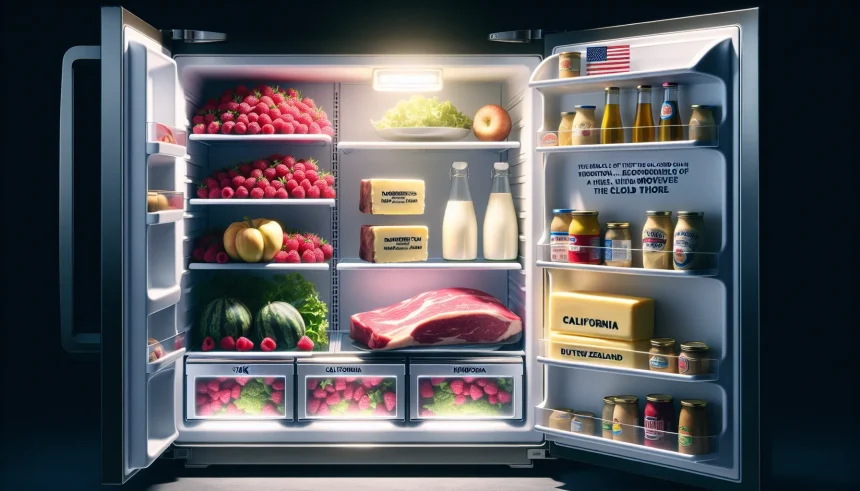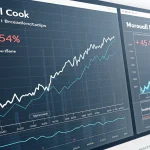Open a refrigerator in the United States and you might find raspberries from California, butter from New Zealand, and steak from Nebraska. That everyday sight reflects a quiet revolution: the cold chain. Food journalist Nicola Twilley, author of “Frostbite: How Refrigeration Changed Our Food, Our Planet, and Ourselves,” explains how a world made cold transformed diets, business, and the movement of goods. Speaking with hosts Nick Fountain and Alexi Horowitz-Ghazi, she traces the rise of refrigerated transport and the trade-offs that came with it.
How the world got cold
The cold chain is the system that keeps food chilled from farm to truck to warehouse to grocery store and finally to the home. Twilley calls it one of the great achievements of modern life because it made fresh and perishable foods widely available and safer to eat. Refrigeration decoupled harvest seasons from daily meals, allowing produce and proteins to travel long distances and stay edible longer.
“The next time you open your fridge, take a second to behold the miracles inside of it.”
“The cold chain is the name for the end-to-end refrigeration of our food from farm to truck to warehouse to grocery store and ultimately to our fridges at home.”
Before chilling, many foods had to be eaten quickly, salted, canned, or smoked. Cold transport opened new markets for farmers and created year-round expectations for shoppers. It also rewired supply chains, pushing companies to coordinate temperature control at every step.
Two unlikely pioneers
Twilley points to two figures whose choices helped set the cold chain in motion. One was Gustavus Swift, a meat magnate famous for relentless cost-cutting. He saw that refrigerated railcars could move dressed beef across the country, undercutting local slaughter and changing how Americans bought meat. By shifting cooling to the rail line, Swift helped standardize quality and stabilize prices.
The other was Polly Pennington, a train-hopping chemist whose scrappy approach placed her inside the industrial systems she studied. Twilley highlights Pennington’s on-the-ground experiments as a turning point for understanding what it takes to keep perishables consistently cold while in motion. Their stories show that refrigeration evolved through frugal business bets and hands-on science rather than flashy inventions alone.
Economic ripple effects
Refrigeration altered the map of food production. Regions that could grow or raise food efficiently gained access to faraway customers. Grocers expanded their offerings, and consumers came to expect strawberries in winter and steady supplies of meat and dairy. The cold chain also enabled centralized processing, warehouse networks, and national brands.
For workers and small producers, the shift was double-edged. National distribution opened new opportunities yet intensified competition. Large-scale logistics lowered prices for many items but concentrated power in companies that could afford refrigerated fleets and storage.
The hidden costs of staying cool
Twilley also asks whether the cold chain created new problems. Refrigeration uses substantial energy, and some refrigerants carry environmental risks if they leak. Longer supply lines can mean more transport emissions, even as they reduce spoilage. The very success of cold logistics encourages diets rich in perishables shipped long distances, with benefits and costs unevenly spread.
Food safety improved, but complexity increased. If a temperature break occurs at any point, waste and recalls can follow. Companies now track temperatures through sensors and strict monitoring, but every handoff is a test.
What to watch next
- More efficient equipment and tighter leak controls to cut emissions without raising food costs.
- Shorter, regional cold chains that complement national distribution and reduce transport risks.
- Better data sharing across farms, carriers, and retailers to prevent spoilage and waste.
Twilley’s core message is that refrigeration has changed what people eat and how economies work. It made abundance feel normal, even routine. But it also tied everyday meals to complex networks of energy and engineering.
As Fountain and Horowitz-Ghazi note, the cold chain’s success is easy to miss because it is hidden behind closed doors and insulated trucks. The next phase will likely focus on using less energy, trimming leaks, and strengthening local options where they make sense. The fridge will stay full, but how food gets there may need to get smarter—and cooler in every sense.







